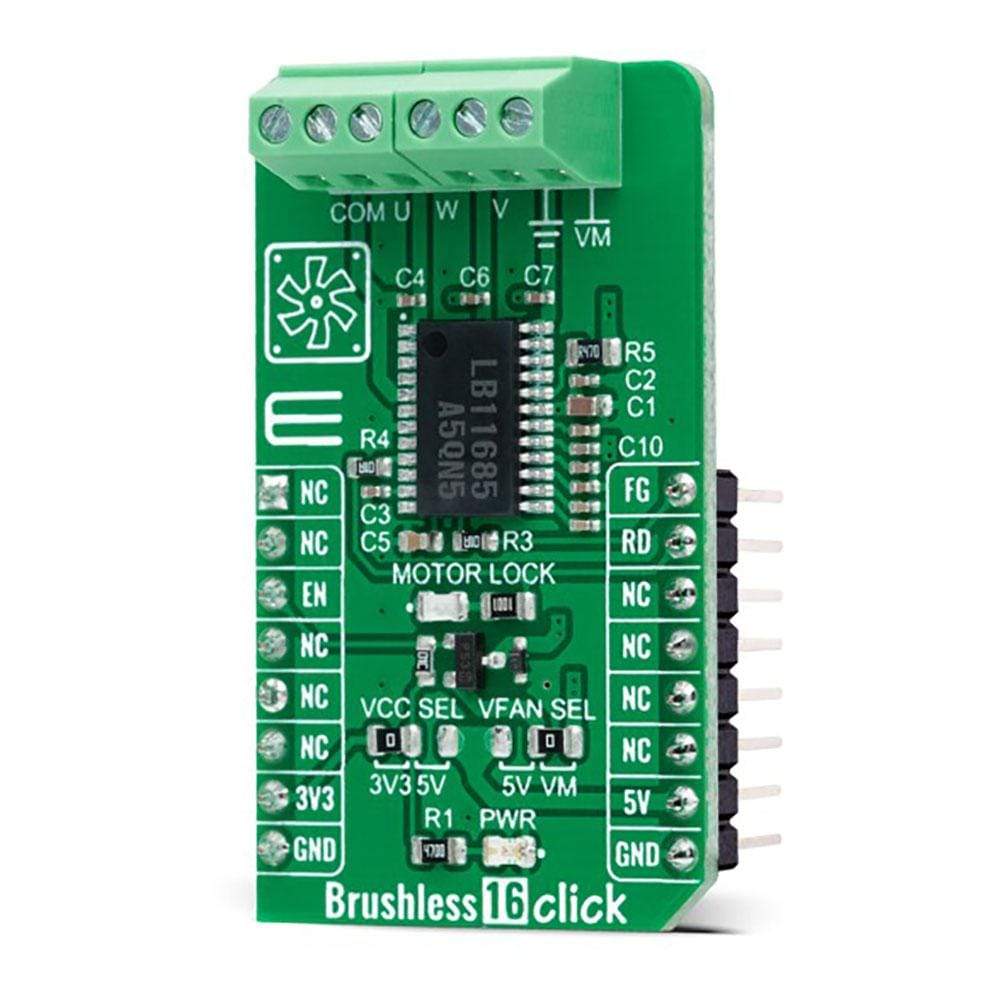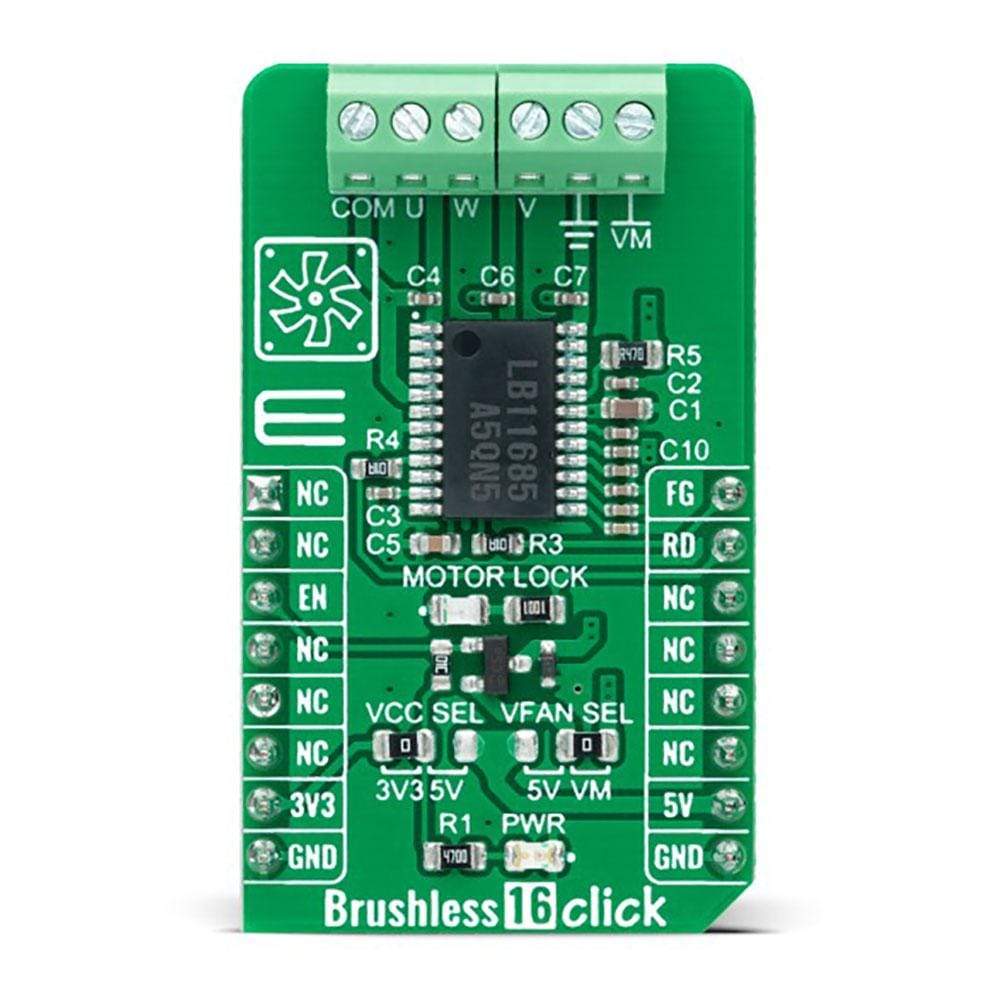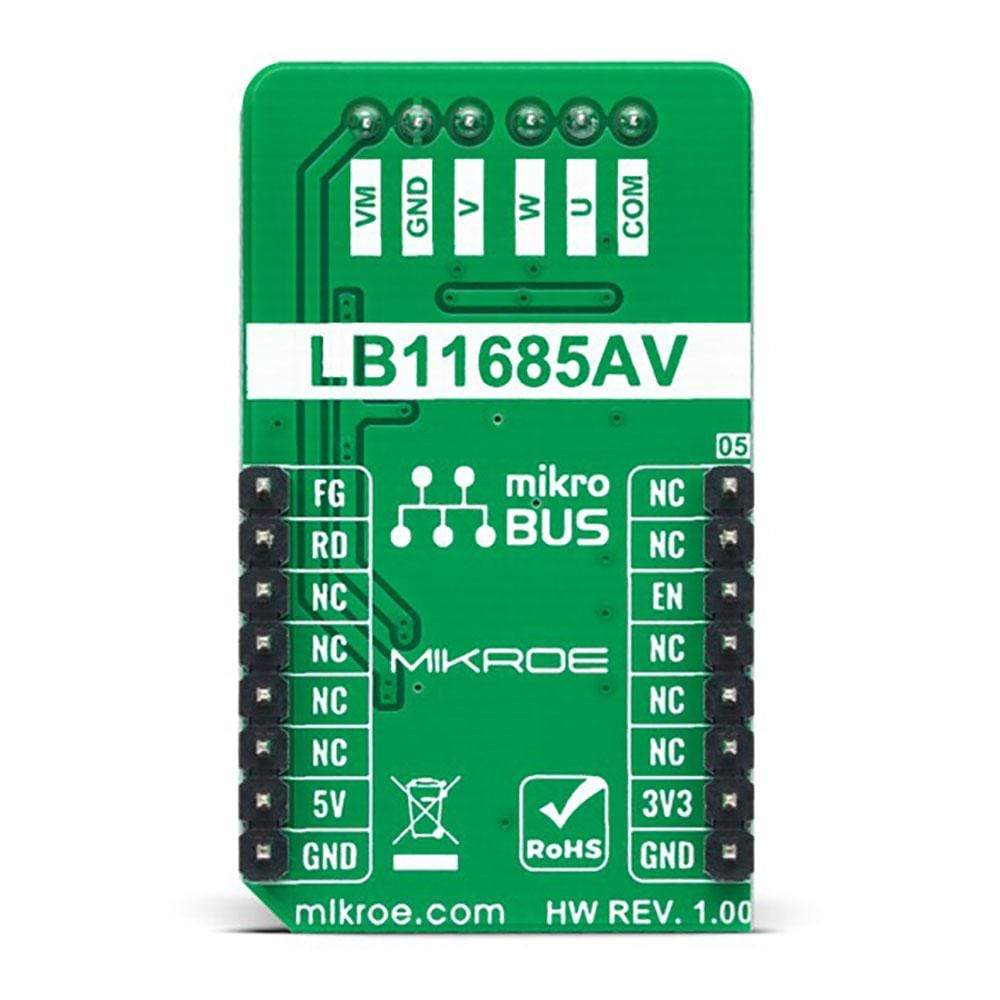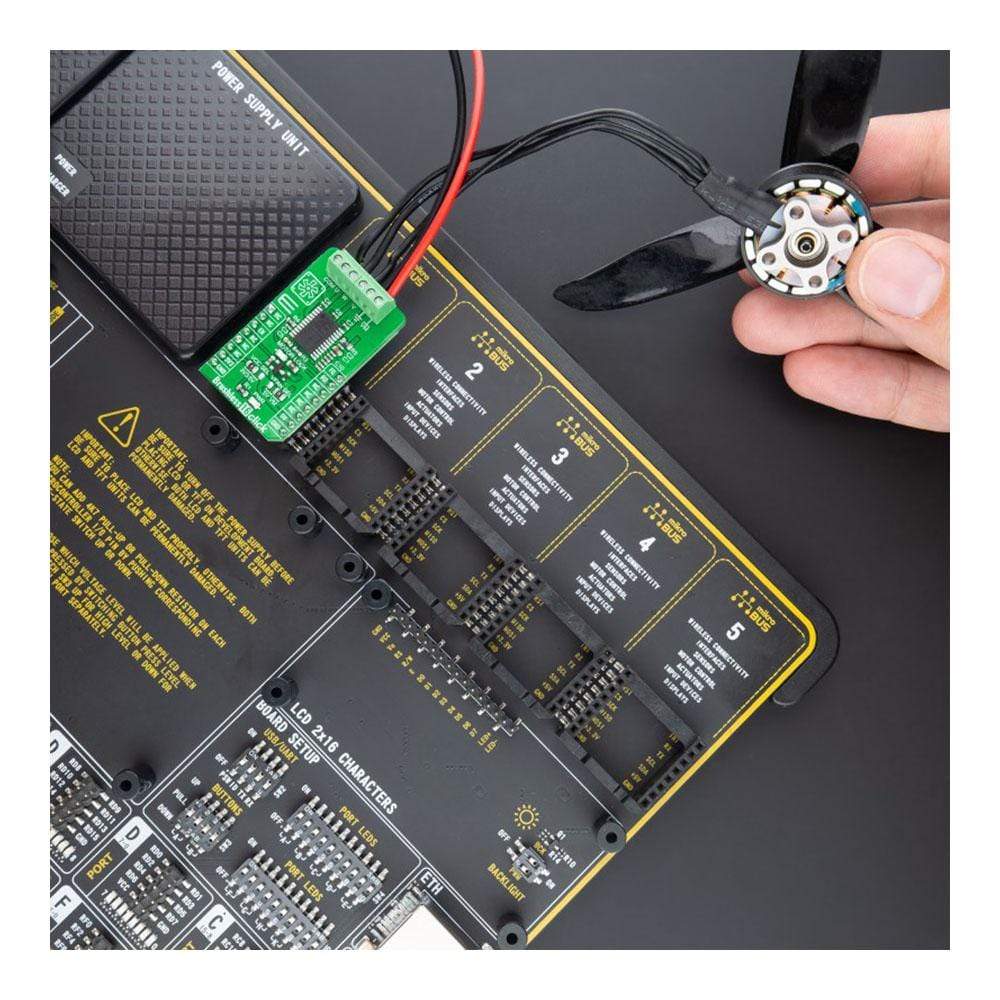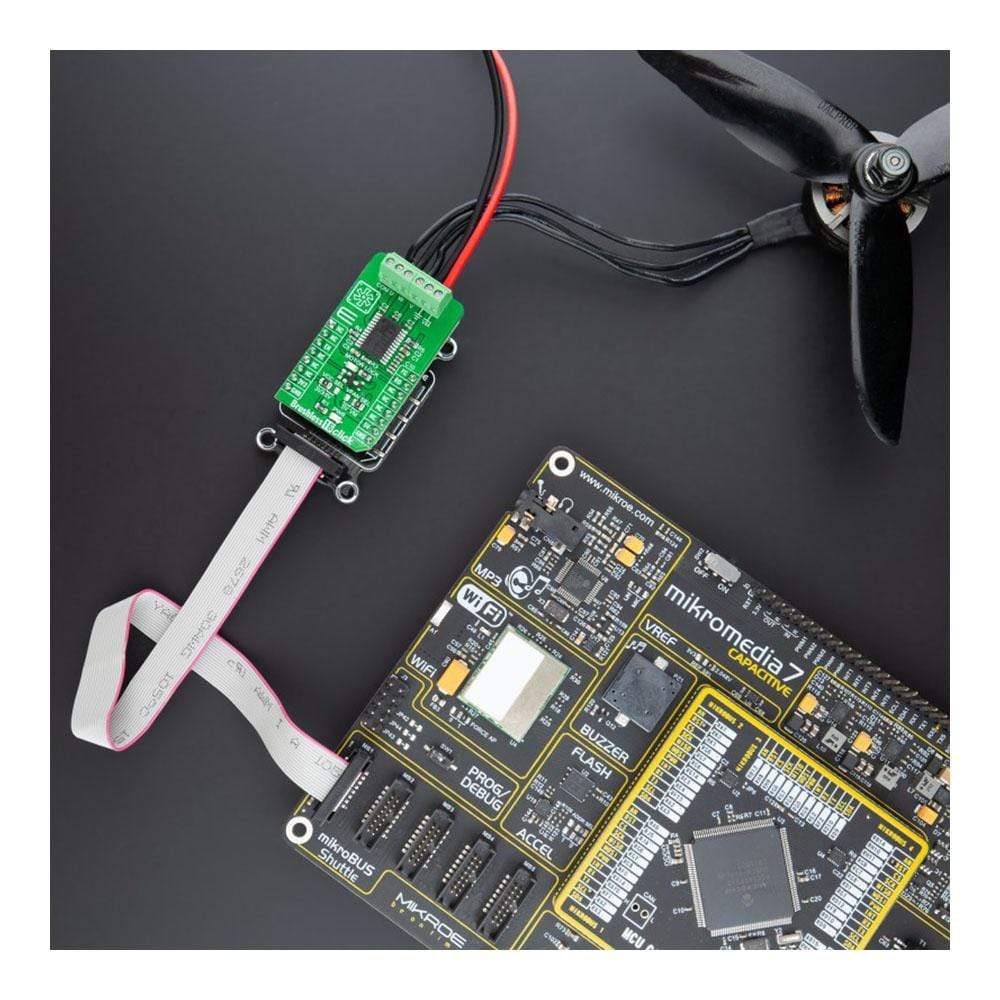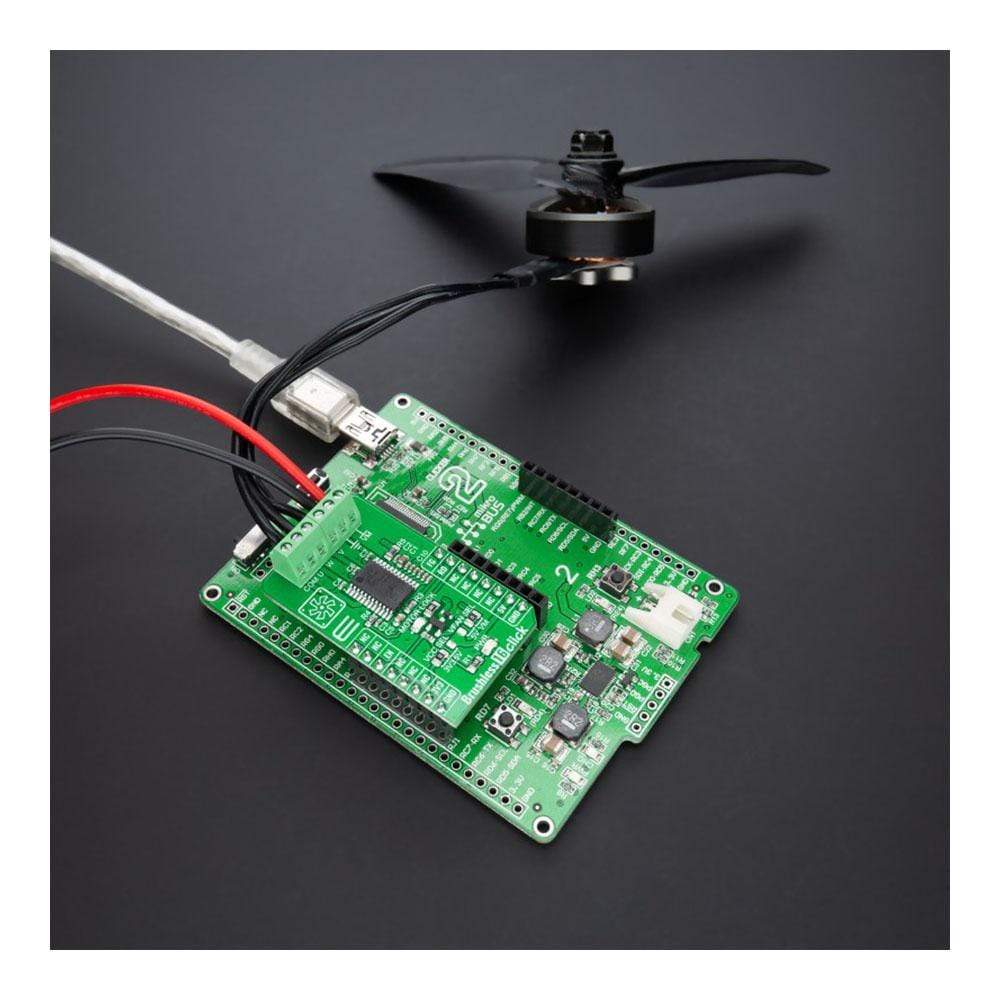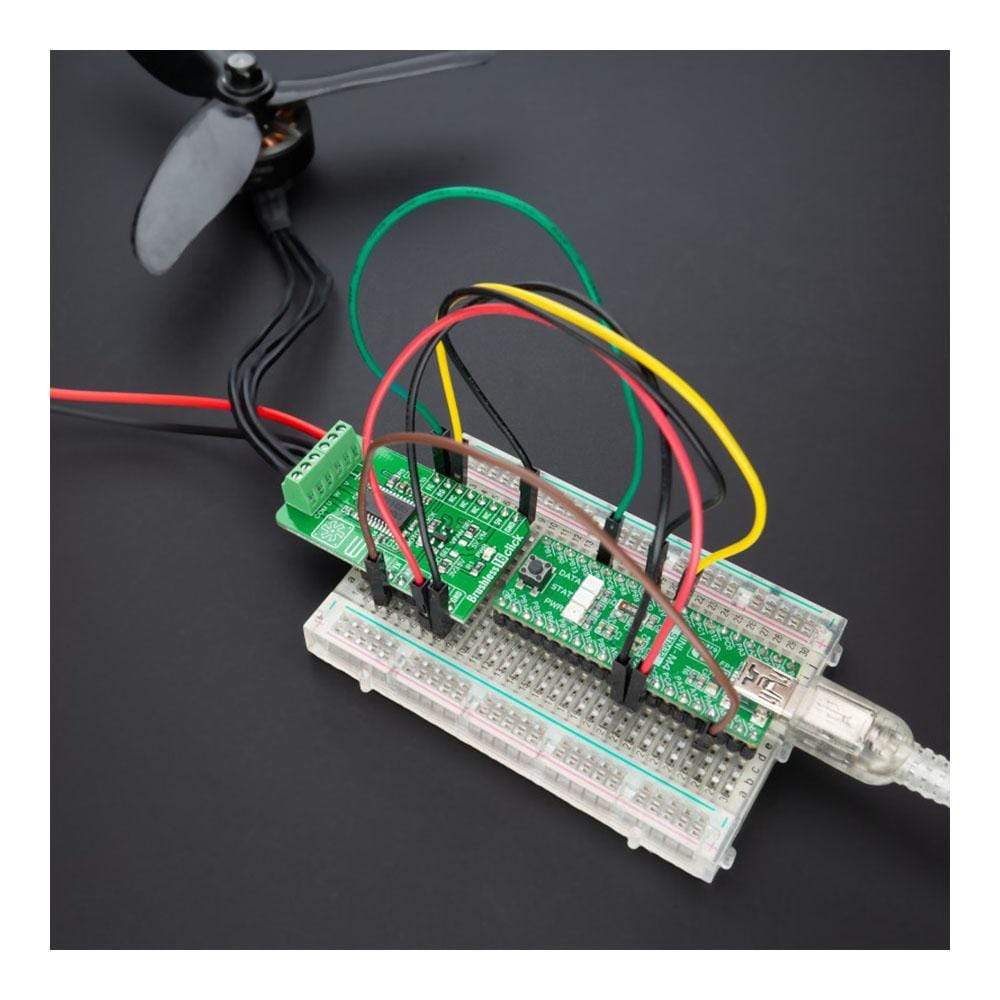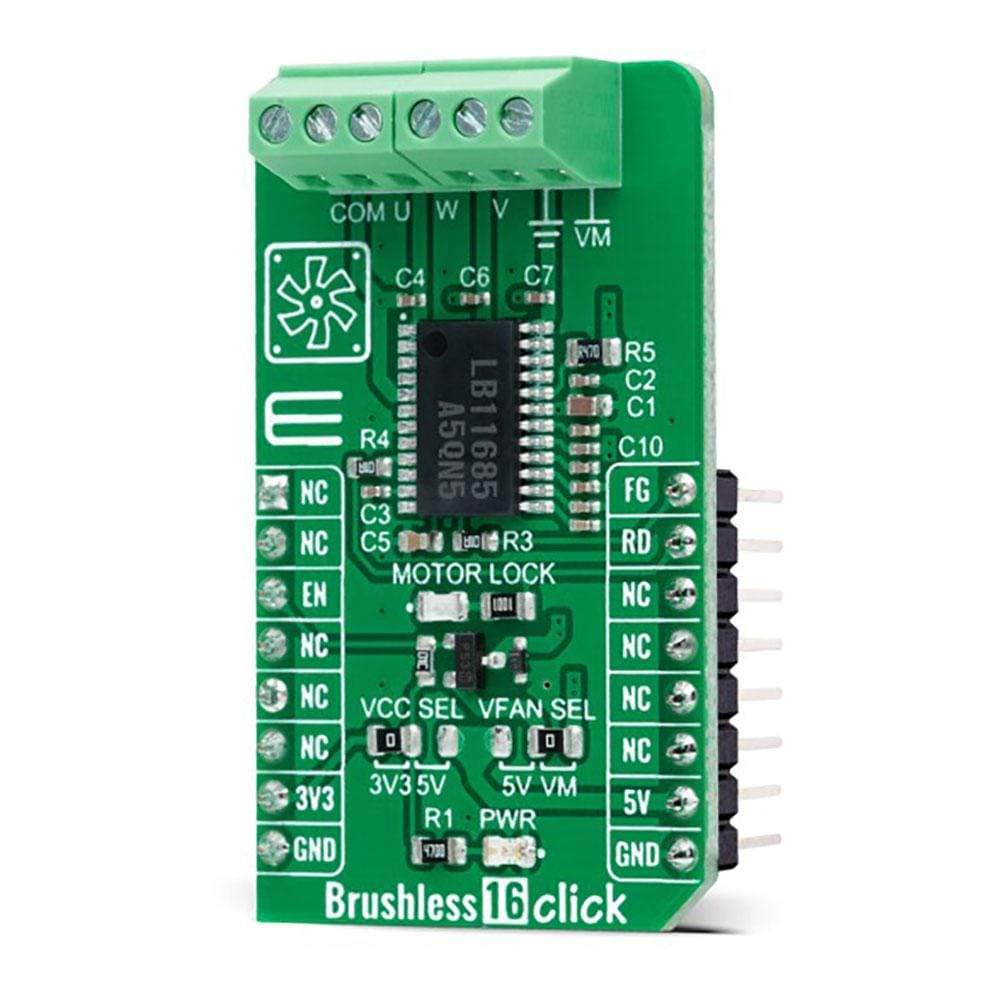
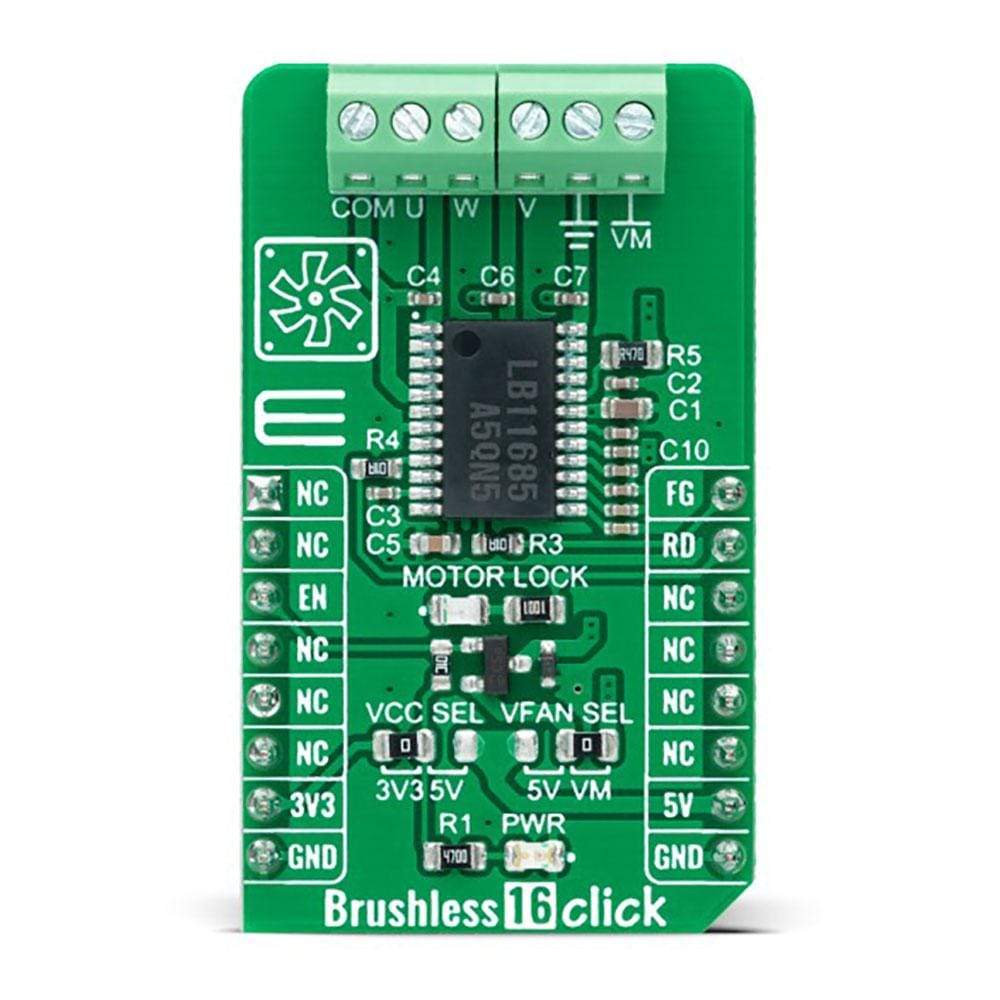
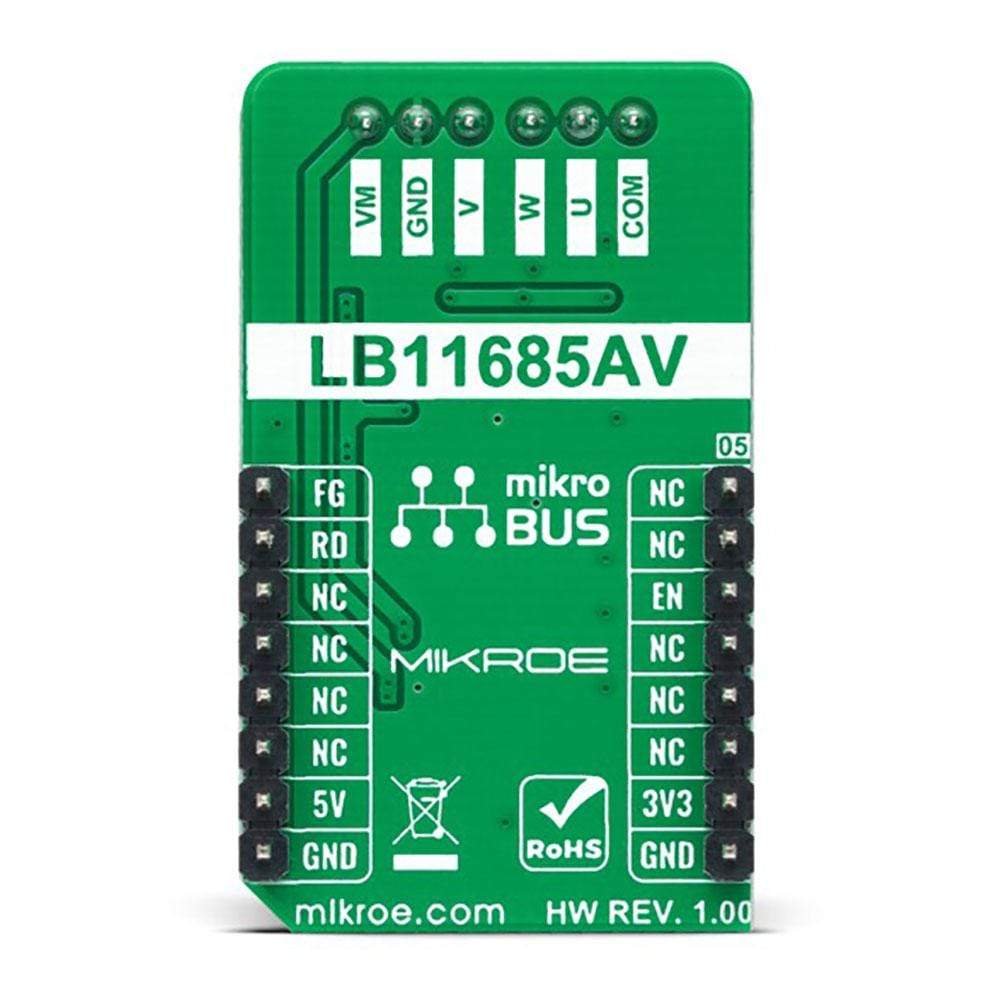

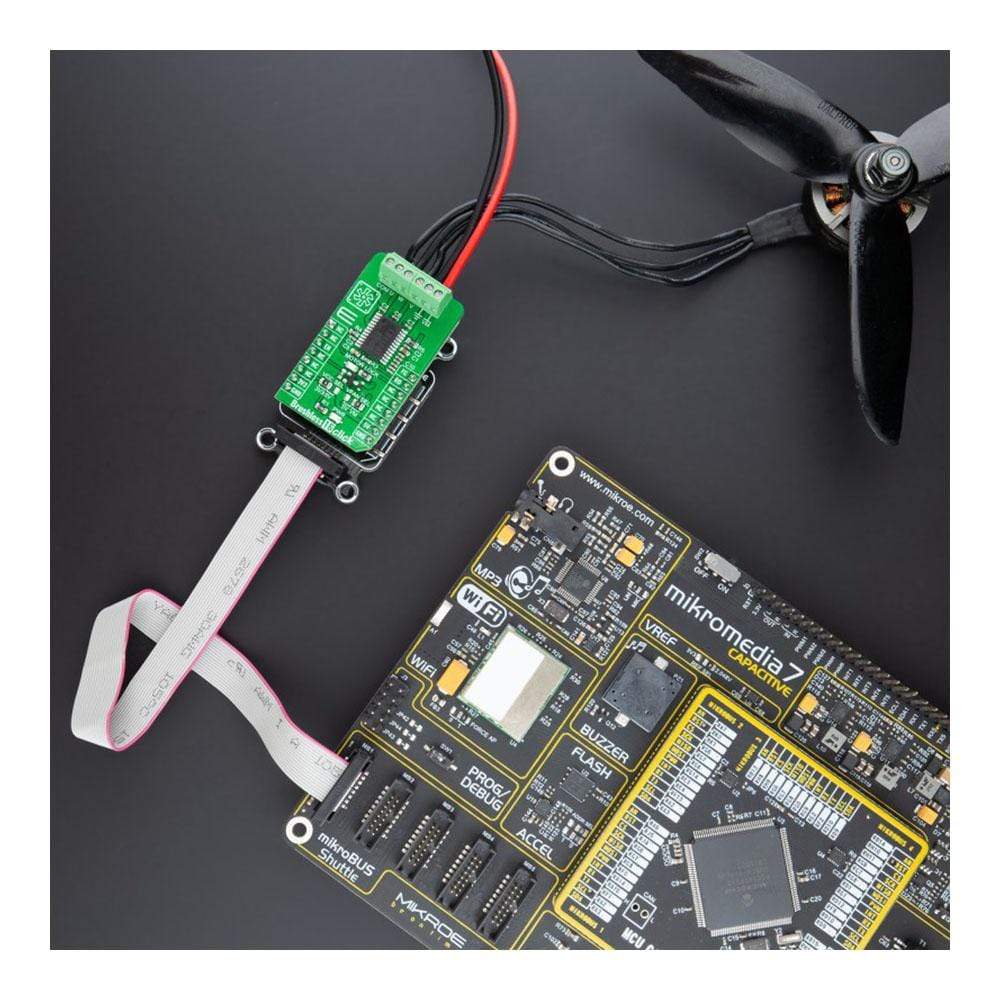
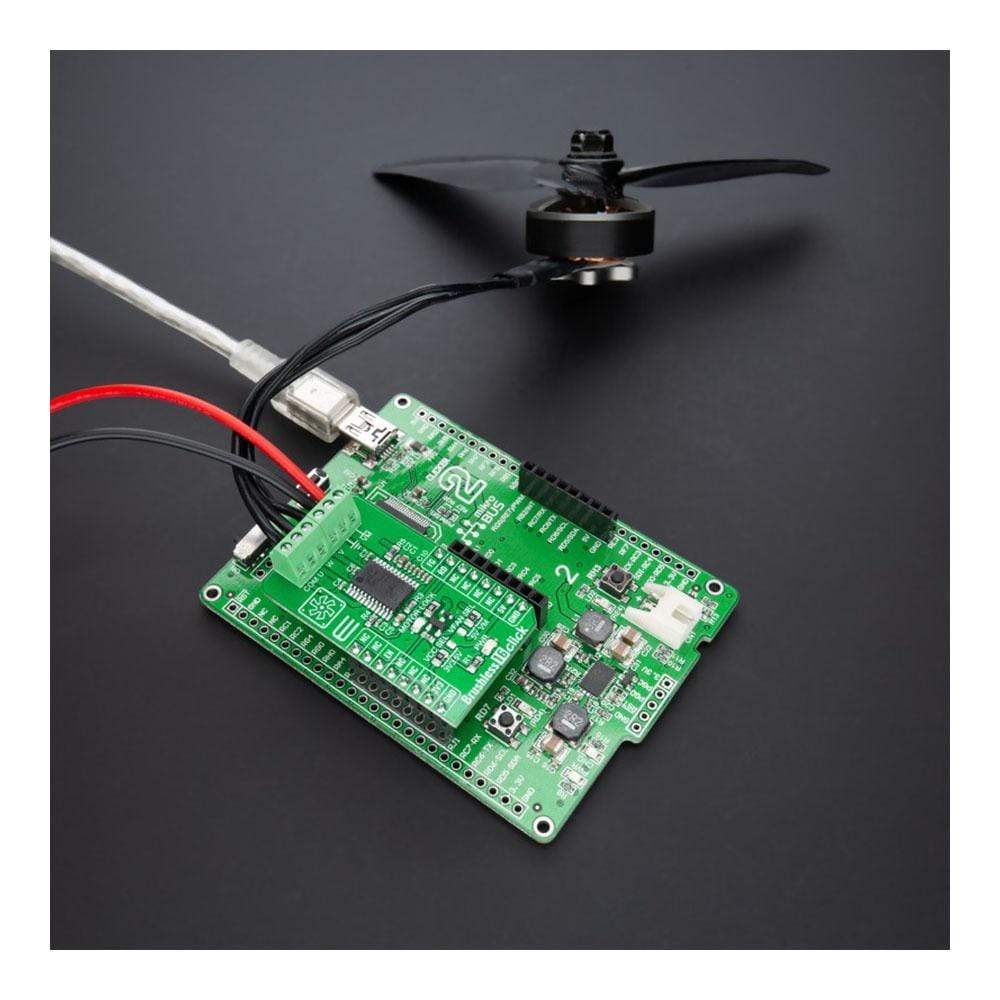
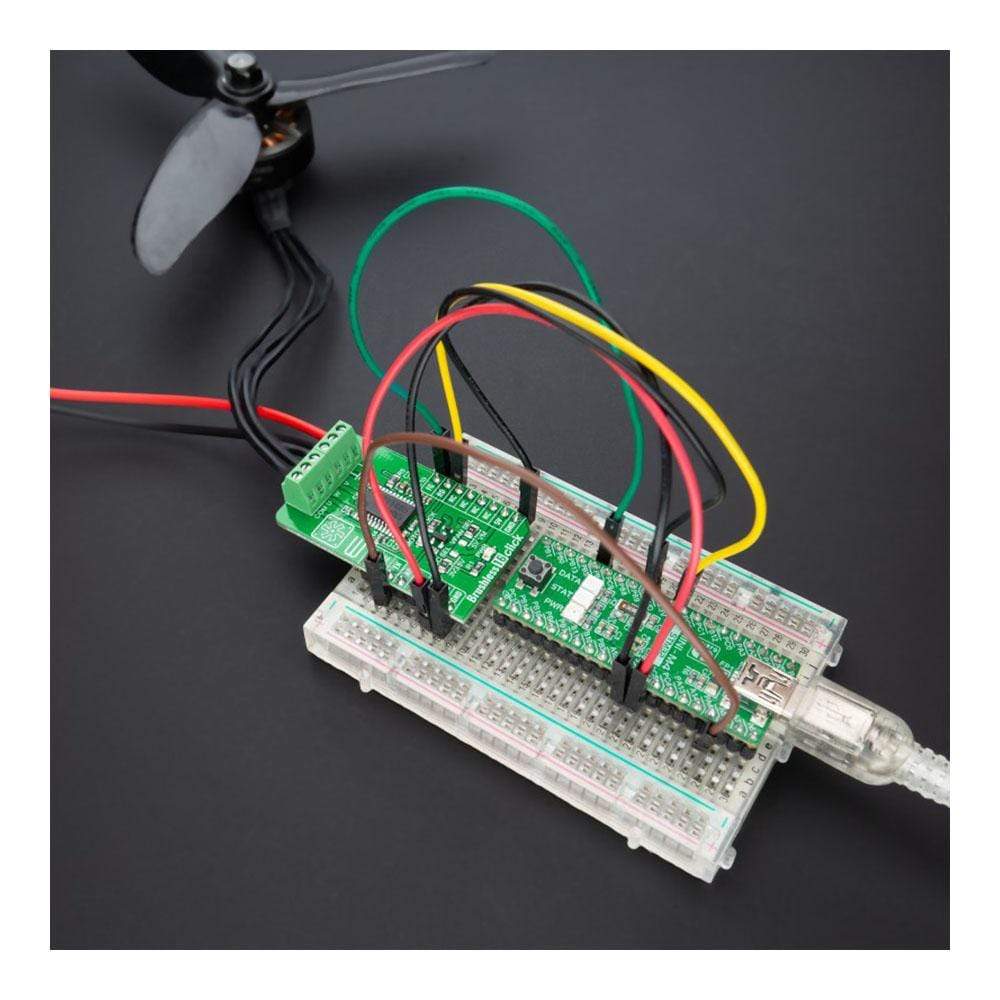
Overview
The Brushless 16 Click Board™ is a compact add-on board suitable for controlling BLDC motors with any MCU. This board features the LB11685AV, a three-phase full-wave current-linear-drive motor driver from ON Semiconductor. It adopts a sensorless control system without the use of a Hall Effect device. The LB11685AV features a current soft switching circuit for quieter operation and is optimal for driving the cooling fan motors used in refrigerators. It also comes with several protection features such as motor lock, thermal shutdown, current limit, beat lock detection, and more.
The Brushless 16 Click Board™ makes the perfect solution for use in home appliances such as air-conditioners and cooling fans, air purifiers, and industrial equipment.
Downloads
Der Bürstenloses 16 Click Board™ ist eine kompakte Zusatzplatine, die sich zur Steuerung von BLDC-Motoren mit jedem MCU eignet. Diese Platine enthält den LB11685AV, einen dreiphasigen Vollwellen-Strom-Linearantriebsmotortreiber von ON Semiconductor. Er verwendet ein sensorloses Steuerungssystem ohne Verwendung eines Hall-Effekt-Geräts. Der LB11685AV verfügt über einen Strom-Soft-Switching-Schaltkreis für einen leiseren Betrieb und ist optimal für den Antrieb der in Kühlschränken verwendeten Kühllüftermotoren geeignet. Er verfügt außerdem über mehrere Schutzfunktionen wie Motorsperre, thermische Abschaltung, Strombegrenzung, Beat-Lock-Erkennung und mehr.
Das Brushless 16 Click Board™ ist die perfekte Lösung für den Einsatz in Haushaltsgeräten wie Klimaanlagen und Kühlventilatoren, Luftreinigern und Industrieanlagen.
| General Information | |
|---|---|
Part Number (SKU) |
MIKROE-4742
|
Manufacturer |
|
| Physical and Mechanical | |
Weight |
0.02 kg
|
| Other | |
Country of Origin |
|
HS Code Customs Tariff code
|
|
EAN |
8606027383359
|
Warranty |
|
Frequently Asked Questions
Have a Question?
Be the first to ask a question about this.

